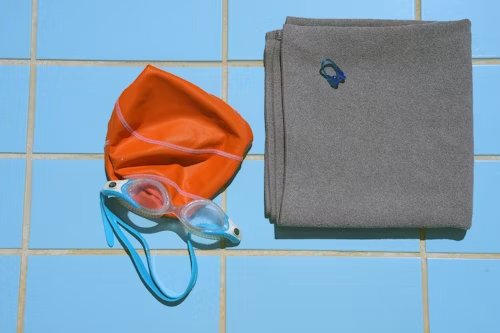Introduction
When people talk about CPAP therapy, they often focus on the mask or machine — the stars of the show. But behind every successful night’s sleep lies a team of unsung heroes: the filters, tubing, and cleaning routines. These small, often overlooked components keep your therapy effective, hygienic, and comfortable.
Understanding CPAP Therapy
CPAP (Continuous Positive Airway Pressure) therapy helps individuals with sleep apnea breathe easily throughout the night. The machine delivers a constant stream of pressurized air through a mask, keeping the airway open and preventing interruptions in breathing.
But here’s the catch — that air must stay clean, filtered, and properly delivered for the therapy to work as intended.
The Backbone of CPAP Performance
Think of your CPAP system like a car engine. The machine provides the power, but without clean filters and clear tubing, performance drops drastically. Dirty filters restrict airflow, contaminated tubing breeds bacteria, and neglected cleaning leads to unpleasant odors and health risks.
CPAP Filters: The First Line of Defense
What CPAP Filters Do
Filters block dust, pollen, and airborne particles from entering your machine — and eventually your lungs. They keep the air fresh and protect the device’s motor.
Types of Filters
- Disposable Filters – Made from paper or fine fiber; replaced every 2–4 weeks.
- Reusable Filters – Made from foam; washed and reused for up to six months.
When to Replace or Clean Filters
If your filter looks discolored, dusty, or worn out — it’s time for a change. A good rule of thumb? Check it weekly, replace monthly (or as recommended by your manufacturer).
Signs of a Bad Filter
- Increased machine noise
- Musty smell from the device
- Reduced airflow or therapy pressure
CPAP Tubing: The Vital Air Pathway
Your tubing acts like a highway for airflow from the machine to your mask. Any blockage, moisture, or bacteria buildup can create a traffic jam — and ruin your sleep.
Types of Tubing
- Standard Tubing: Lightweight, budget-friendly, and works with most machines.
- Heated Tubing: Prevents condensation and “rainout” (water droplets forming inside the hose).
Common Tubing Issues
- Condensation buildup
- Microbial contamination
- Cracking or stiffness due to age
How to Maintain Tubing
- Rinse daily with mild soap and warm water
- Hang to dry fully — moisture breeds bacteria
- Replace every 3–6 months
The Humidifier’s Partner: Keeping Tubing Moisture-Free
If you use a CPAP humidifier, heated tubing is a must-have. It prevents condensation from dripping into your mask, ensuring consistent airflow and comfort. Imagine trying to sleep with cold water splashing your face — not pleasant!
Cleaning Routines That Extend Equipment Life
Consistency is key. A dirty CPAP is a breeding ground for bacteria and mold — and it can sabotage your therapy.
Daily Cleaning
- Wipe mask and tubing with CPAP wipes or mild soapy water.
- Empty and rinse the humidifier chamber.
Weekly Cleaning
- Soak mask, tubing, and chamber in a vinegar-water mix (1:3 ratio).
- Rinse thoroughly and air-dry.
Monthly Maintenance
- Deep clean or replace filters.
- Inspect tubing for cracks or stiffness.
Manual Cleaning vs. Automated CPAP Cleaners
Manual Cleaning
Pros:
- Affordable
- Easy to do at home
Cons: - Requires time and consistency
Automated Cleaners
Devices using ozone or UV light claim to sanitize CPAP parts quickly. While convenient, many aren’t officially approved by CPAP manufacturers or the FDA — so proceed with caution.
Avoiding Common CPAP Maintenance Mistakes
Even the most diligent users slip up sometimes. Avoid these:
- Skipping weekly cleanings
- Using alcohol or bleach (they degrade materials)
- Storing equipment in damp or dusty environments
Health Benefits of Proper CPAP Maintenance
Clean filters and tubing don’t just extend your machine’s life — they protect your health:
- Fewer sinus infections
- Reduced allergy symptoms
- Improved sleep quality
- Stable air pressure during therapy
Traveling With CPAP Equipment
Keep a travel cleaning kit handy — a small bottle of soap, wipes, and spare filters. Compact drying racks or portable sanitizers help maintain hygiene while you’re on the move.
Troubleshooting Common Problems
- Air leaks? Check mask seals and tubing connections.
- Bad odor? Likely bacteria in tubing — clean immediately.
- Low pressure? Clogged filters or damaged tubing could be the culprit.
When to Replace CPAP Parts
- Filters: Every 2–4 weeks
- Tubing: Every 3–6 months
- Humidifier Chamber: Every 6 months
- Mask Cushion: Every 1–3 months
Ignoring these timelines can lead to health issues and poor therapy results.
Creating a Sustainable Cleaning Routine
Want to keep it eco-friendly? Use biodegradable soap and vinegar instead of harsh chemicals. Set calendar reminders or label parts with replacement dates — your future self will thank you.
Conclusion
Filters, tubing, and cleaning may not get the spotlight, but they’re the backbone of successful CPAP therapy. Treat them well, and your CPAP will return the favor with cleaner air, better sleep, and a healthier you.
